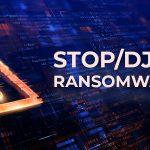In the ever-evolving landscape of cyber threats, ransomware remains a persistent menace, with new variants emerging regularly to wreak havoc on individuals and organizations alike. One such variant, FridayBoycrazy, has recently surfaced, demonstrating the insidious nature of these malicious programs. In this article, we delve into the workings of FridayBoycrazy ransomware, its destructive actions, consequences for victims, and provide a comprehensive guide for its removal and prevention.
Understanding FridayBoycrazy Ransomware
FridayBoycrazy is a variant of the notorious Chaos ransomware, engineered to encrypt files on infected computers and demand ransom for their decryption. Upon activation, this malware encrypts files, appending a string of random characters to their filenames, rendering them inaccessible to users. Additionally, FridayBoycrazy alters the desktop wallpaper and generates a ransom note (“Warning.txt”), informing victims of the encryption and providing contact details for the perpetrators.
The ramifications of falling victim to FridayBoycrazy ransomware are severe. Encrypted files become inaccessible, disrupting normal operations and potentially causing significant data loss. The ransom note taunts victims with the promise of decryption software, obtainable through direct contact with the cybercriminals via Discord or email. However, succumbing to these demands is fraught with risks, as there’s no guarantee of receiving decryption tools even after payment.
Detection Names and Similar Threats
FridayBoycrazy ransomware is identified by various antivirus programs under different detection names, including Avast, Combo Cleaner, ESET-NOD32, Kaspersky, and Microsoft. Similar threats in the ransomware landscape include FORCE, Vook, and Nacugunder, each with its own modus operandi and tactics.
Removal Guide
Removing FridayBoycrazy ransomware from an infected system is paramount to prevent further damage and restore normalcy. Follow these steps diligently:
- Enter Safe Mode: Restart your computer and press F8 repeatedly during boot to access the Advanced Boot Options menu. Choose Safe Mode with Networking.
- Disable System Restore: Right-click on “My Computer” or “This PC” and select “Properties.” Navigate to “System Protection,” select the drive, and click “Configure.” Disable system protection and click “Apply.”
- Delete Temporary Files: Press Windows + R, type “%temp%”, and press Enter. Delete all files in the Temp folder.
- Update and Run Antivirus Software: Ensure your antivirus software is up-to-date and perform a full system scan to detect and remove any remaining traces of FridayBoycrazy ransomware.
- Restore Files from Backup: If available, restore encrypted files from a secure backup to recover lost data without succumbing to ransom demands.
Preventing Future Infections
Prevention is key to mitigating the risk of ransomware infections. Adopt the following best practices:
- Keep Software Updated: Regularly update operating systems and software to patch known vulnerabilities exploited by ransomware.
- Exercise Caution Online: Avoid clicking on suspicious links or downloading attachments from unknown sources, as they may contain malware.
- Enable Firewall and Antivirus Protection: Utilize robust firewall and antivirus software to detect and block malicious activity.
- Educate Users: Educate employees and individuals about ransomware threats and the importance of cybersecurity hygiene, including safe browsing practices and email vigilance.
Conclusion
FridayBoycrazy ransomware represents a significant threat to individuals and organizations, capable of causing extensive data loss and financial harm. By understanding its actions, consequences, and implementing robust security measures, users can safeguard against this and similar cyber threats, ensuring the integrity and security of their digital assets.





